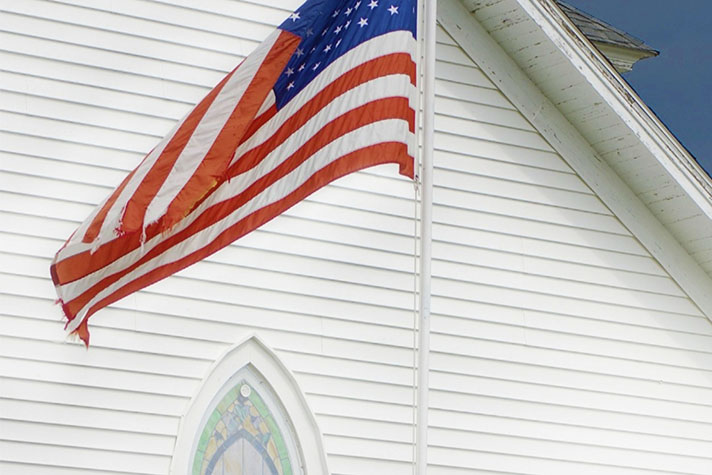
What would you say is the most apt description of the church today, speaking generally? Would you say it is “on fire”? Thriving? Never more relevant than now? Growing? Turning the world upside down?
Really?
People ask me all over the world, “What is the church doing today?” I usually reply: “Not a lot, in my humble opinion.” There are exceptions—yes, in some happier spots of the world, although more so in Third World countries and usually in remote places. I could name a few. But, generally speaking, I think we are living “between the times,” to use Richard Bewes’s phrase.
Dr. Martyn Lloyd-Jones would say that the most apt description of today’s church is its “superficiality.” Dr. J.I. Packer has said that the Bible Belt in America is “a thousand miles wide and one inch deep.” Dr. A.W. Tozer said that if the Holy Spirit were completely taken from the church today it would continue on as if nothing happened and “nobody would know the difference.”
If the Parable of the Ten Virgins (Matthew 25:1-13) is eschatological (referring to the last days), as many Bible students suggest, we can easily see what our Lord Jesus Christ would say about today’s church: It is asleep. “The bridegroom was a long time in coming, and they all [both the wise and foolish virgins] became drowsy and fell asleep” (25:5).
The Parable of the Ten Virgins is introduced by Jesus’ words in Matthew 25:1, “At that time” (NIV) or “Then” (ESV). That would refer to what He said in Matthew 24, surely a chapter that partly describes the last days. If that is true, the Parable of the Ten Virgins is not only eschatological but prophetic: Jesus was telling us in advance what the church would be like in the very last days. Most Bible interpreters would generally agree that the Parable of the Ten Virgins in some sense refers to the church, speaking generally. Five of them were wise, five of them were foolish. But all were asleep.
Characteristics of Sleep
You don’t know you were asleep until you wake up. We’ve all done this—lie down for a moment not to sleep but to relax—only to find out we slept for a while!
You do things in your sleep you would not do if you were awake. Our dreams prove this. Whether such dreams are unexpressed fears or wishes, as Sigmund Freud might say, we do things when asleep we would not do if awake.
We hate the sound of an alarm. How would you like to be awakened at 2 a.m., when you did not ask for this? We would resent being awakened. We want to sleep on.
I happen to believe that the next thing to happen on God’s calendar is the Midnight Cry: “At midnight the cry rang out: ‘Here’s the bridegroom! Come out to meet him!’” (Matthew 25:6). This does not necessarily mean 12 midnight; the Greek literally means “in the middle of the night”—like 2 a.m., when the church would be in a deep sleep, metaphorically speaking.
The Parable of the Ten Virgins is very relevant at the present time. It depicts the church today—nearly everywhere. We are asleep, and we don’t know it. We may sincerely believe we are wide awake. But we are asleep. I would even say we are in a deep sleep—like at 2 a.m.—and we don’t want to be disturbed.
What is evidence we are asleep? Simply put: the lack of outrage over what is going on in the world. We not only tolerate what is happening before our eyes, we have become so used to it that we are virtually impervious to it.
There are the Supreme Court verdicts. The Biblical view of marriage is on the way out. Terrorism is at our doors. Church attendance is declining. We are losing our young people. If someone calls things like this to our attention we say, “Oh yes. It’s pretty awful.” Then we roll over, zzzzzzzz, and essentially say, “Let me sleep on.”
What should sadden us is that the world does not respect the church. There is virtually no fear of God in the land. Mary Queen of Scots (1542-1587) said she feared the prayers of John Knox (c.1514-1572) more than an army of 10,000 men. But that was a long time ago.
When Jonathan Edwards preached “Sinners in the Hands of an Angry God” on July 8, 1741, men held on to church pews and trees to keep from slipping into hell. Word of that sermon spread all over New England in days and all over England in weeks. In 1802, in an area called Cane Ridge in Bourbon County, Kentucky, a Methodist lay preacher stood on a fallen tree on a Sunday morning, taking his text from 2 Corinthians 5:10 (“We must all stand before the judgment seat of Christ to give an account of things done in the body, whether good or bad”).
As he spoke, hundreds fell to the ground by the power of the Holy Spirit. The Cane Ridge Revival lasted some four days. The Great Awakening lasted for more than 20 years. Both brought about a fear of God in our nation. They gave us our Bible Belt.
But who fears God today? Not many, I suspect. An awakened church will help restore a fear of the Lord in our nation. No election will do it. But God can do it. For this we pray. Or will it take the Midnight Cry? ©2016 R.T. Kendall
R.T. Kendall served as minister at Westminster Chapel in London from 1977 to 2002. His forthcoming book, Is Your Heart Prepared for the Midnight Cry? is scheduled for release next month.
